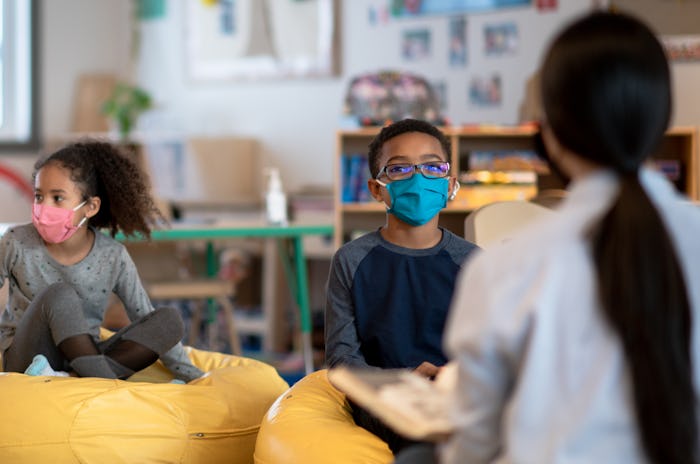News

CDC Says Schools No Longer Need “Test-To-Stay” Policy In New Covid Exposure Guidelines
The agency is also doing away with quarantine measures for those exposed to the virus.
On Thursday, the Centers for Disease Control and Prevention (CDC) updated its guidance on controlling the spread of Covid-19. Among the most notable changes was the agency’s decision to do away with quarantine measures for those exposed to the virus and the de-emphasis of social distancing (aka keeping six feet apart). Additionally, with the 2022-2023 academic year just around the corner (or, in some districts, recently underway), these new guidelines eliminate the CDC’s “test-to-stay” policy in schools.
The new guidelines, while not a massive overhaul of existing protocols, are nevertheless looser than they have been until now, emphasizing vaccination and assessment of personal risk “based on their own risk for severe illness and that of members of their household, their risk tolerance, and setting-specific factors.” While quarantine recommendations remain in place for those who have contracted Covid-19 regardless of vaccination status — urging infected individuals to isolate for at least five days — those who have merely been exposed are now advised to wear a high-quality mask in public for 10 days and get tested on day five. The CDC cites widespread immunity, either through vaccination or infection, and the availability of effective Covid-19 prevention and management tools as prompting the decision.
“We’re in a stronger place today as a nation, with more tools — like vaccination, boosters, and treatments — to protect ourselves, and our communities, from severe illness from COVID-19,” Greta Massetti, author of the agency’s Morbidity and Mortality Weekly Report, said in a statement. “This guidance acknowledges that the pandemic is not over, but also helps us move to a point where COVID-19 no longer severely disrupts our daily lives.”
The CDC’s guidance brings recommendations for vaccinated and unvaccinated individuals more in line with one another, since, as Massetti explained to NPR, “Based on the latest ... data, it's around 95% of the population” who has immunity from severe illness, “and so it really makes the most sense to not differentiate.” Currently, only about 30% of school-aged children from 3 to 11 are fully vaccinated — older children, between 12 and 17, are about 60% fully inoculated.
Guidelines on best practice in schools have also been tweaked. Among the most notable changes to previous guidance for schools includes eliminating recommendations to cohort students, conduct routine screening testing, and quarantine due to exposure, thus eliminating the CDC’s previous “test-to-stay” policy. Health officials have also added detailed information on when to wear a mask, which the CDC ties to community levels as reported by the agency.
“Because we're no longer recommending quarantine, we're no longer including a section on test-to-stay because the practice of handling exposures would involve masking rather than a quarantine, and test-to-stay was an alternative to quarantine,” Massetti explained to ABC News.
Not everyone is happy with the move toward loosening Covid mitigation protocols. On Twitter, users have expressed anger, sadness, and even gallows humor to reflect their feelings on the new guidance.
“The new CDC guidelines are such trash,” says Twitter user @kelwalk12. “The number 1 reason I want to leave teaching right now is because I feel unsafe in a bodily way at school. I don’t want to be exposed to multiple, overlapping pandemics and possible gun violence.”
The new guidelines acknowledge the ongoing transmission of the virus, but reiterate the CDC’s current focus is on reducing “medically significant” illness, death, and health care system strain in order to establish “long-term sustainable routine practices is imperative for society and public health.”